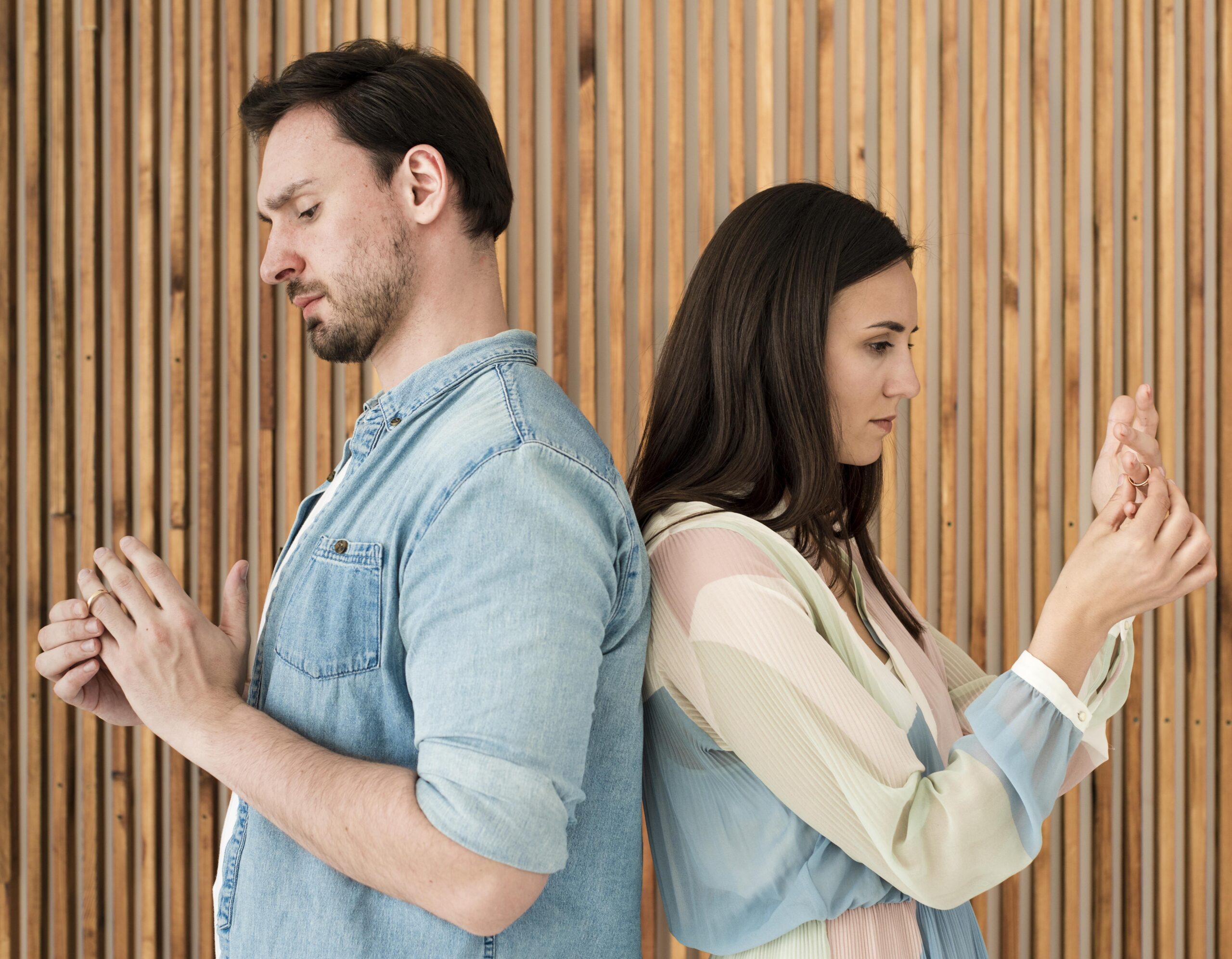7 Body Language Signs of Unhappy Married Couples
When it comes to marriage, words aren’t the only way we communicate. Our bodies often speak louder than our voices, especially when emotions run deep. In fact, many therapists say that nonverbal cues can reveal more about the state of a relationship than any argument or conversation ever could.
If you’ve been wondering whether something feels “off” in your marriage, or you want to better understand your partner’s unspoken signals, learning to read body language is a powerful place to start. Below, we dive into seven body language signs that may indicate unhappiness in a marriage—plus what you can do about them.
1. Avoiding Eye Contact Shows Emotional Distance

One of the most telling signs of emotional disconnection is a consistent lack of eye contact. In healthy, happy marriages, partners naturally make eye contact during conversations, sharing glances that build trust and intimacy.
- What it may mean:
- Disinterest in what the other is saying
- Avoidance of confrontation or emotional topics
- Guilt, resentment, or emotional withdrawal
Example: You share something important, and your partner keeps looking at their phone or the television. Over time, this sends a strong message: “I’m not present with you.”
What to try: Start small. When you talk to each other, gently request eye contact. Begin with moments of shared attention—even 30 seconds of uninterrupted eye contact can foster reconnection.
2. Crossed Arms and Stiff Posture Signal Defensiveness

Our bodies instinctively open up when we feel safe and emotionally available. In unhappy relationships, however, crossed arms, slumped shoulders, or physically turning away from a partner can signal discomfort, defensiveness, or a lack of emotional safety.
What it may mean:
- A barrier is being created (consciously or unconsciously)
- Feeling emotionally distant or guarded
- Discomfort with vulnerability
Example: You’re sitting on the couch discussing your day, and your partner is leaning away from you with arms folded. It can feel like a physical wall is between you.
What to try: Pay attention to your own body language first. When you soften your posture, your partner may mirror you. Make a conscious effort to sit beside each other rather than across or far apart.
3. Lack of Touch Reflects a Drop in Affection

Physical touch is a key ingredient in emotional bonding. From hand-holding to casual back rubs, it communicates affection, comfort, and closeness. A noticeable decline in touch may signal emotional strain.
What it may mean:
- Resentment or anger
- Discomfort with intimacy
- Fear of rejection
Example: You reach for your partner’s hand, and they subtly pull away or leave it hanging. These small moments add up, leaving one or both partners feeling rejected.
What to try: Begin with low-pressure physical connection, like a brief shoulder touch or a hug goodbye. If it feels too difficult, this may be a good topic to explore in therapy.
4. Turning Away While Talking Means You’re Not Fully Present

Sighs and eye rolls might seem like harmless expressions of frustration, but over time, they can erode emotional intimacy. These gestures often reflect irritation, contempt, or emotional burnout.
What it may mean:
- A lack of patience or compassion
- Contempt (a strong predictor of relationship failure)
- Feeling overwhelmed by repeated conflict
Example: You ask your partner to do something small, and they respond with a loud sigh or dramatic eye roll. It signals annoyance, but also dismissal.
What to try: Catch yourself if you’re the one sighing or rolling your eyes. Replace it with a breath or a pause. When your partner does it, calmly name the action without blame: “I noticed you sighed—can we talk about what’s bothering you?”
5. Eye-Rolling and Sighs Show Growing Frustration

Turning your back, physically walking away, or turning your head during a discussion is a clear nonverbal cue that can signal withdrawal or avoidance. It’s a physical manifestation of shutting down emotionally.
What it may mean:
- Feeling overwhelmed or emotionally unsafe
- A desire to disengage or avoid conflict
- Lack of emotional investment
Example: During a difficult conversation, your partner turns their body away or leaves the room abruptly.
What to try: If either of you needs space, express it verbally: “I need a five-minute break, but I want to come back to this conversation.” This maintains connection even when emotions are high.
6. Tense Facial Expressions Show Hidden Stress

Our faces reveal our emotional state, often more accurately than our words. In unhappy relationships, chronic tension in the jaw, furrowed brows, or clenched lips may suggest unspoken stress or unhappiness.
What it may mean:
- Suppressed emotions
- Longstanding frustration or sadness
- Emotional fatigue
Example: Your partner always seems serious or stressed around you, even when you’re discussing neutral topics.
What to try: Make space for check-ins: “You seem tense lately. Is something on your mind?” Encourage honest dialogue and give your partner permission to express without judgment.
7. Leaning Away or Keeping Distance Says “I Need Space”

Happy couples often “mirror” each other unconsciously—nodding at the same time, matching tones of voice, or moving in rhythm. When this synchrony fades, it may indicate emotional distance.
What it may mean:
Disconnect or lack of emotional attunement
- Preoccupation or inner withdrawal
- Lack of shared emotional experience
Example: When you laugh, your partner doesn’t smile or acknowledge it. It feels like you’re not on the same emotional wavelength anymore.
What to try: Find small ways to reconnect through shared activities: cooking together, watching a comedy, or simply sitting beside each other in silence. Synchrony can be rebuilt with time and intention.
When to Seek Help

If these signs resonate with you, and you feel stuck or overwhelmed, know that you don’t have to figure it out alone. Couples therapy offers a safe and guided space to understand these unspoken dynamics, rebuild trust, and develop healthier ways of relating.
- Working with an experienced therapist can help you:
- Recognize patterns you might not be aware of
- Create emotional safety for open communication
- Heal past wounds and develop healthier ways of connecting
Meet Dr. Harel: Your Guide Toward Healing

If you’re in Los Angeles and looking for driven and research-backed couples therapy, Dr. Harel who is a licensed clinical psychologist with 15+ years of experience in helping couples reconnect. Whether you’re struggling with communication, intimacy, or rebuilding trust after a rupture, Dr. Harel provides a nonjudgmental and supportive environment tailored to your unique relationship.
His approach blends science-based techniques with deep emotional insight, guiding couples toward mutual understanding, emotional intimacy, and real change. Learn more or schedule your first session today to start the journey toward a more fulfilling relationship.
Remember: Love isn’t just about the words you say. It’s also in the way you lean in, hold hands, or offer a soft glance across the room. Pay attention. Healing often begins with noticing.
Ready to Reconnect? Let Dr. Harel Help You Understand What Your Body Language is Saying
If you’ve noticed any of these signs in your relationship, don’t ignore them. Small shifts in body language can signal deeper emotional needs—and with the right guidance, they can also lead to healing and reconnection. Dr. Harel offers a warm, supportive space for couples in Los Angeles to explore these signals, rebuild trust, and strengthen emotional bonds.
Take the first step toward a more connected, fulfilling relationship—Book a session with Dr. Harel today.

Leave a Reply